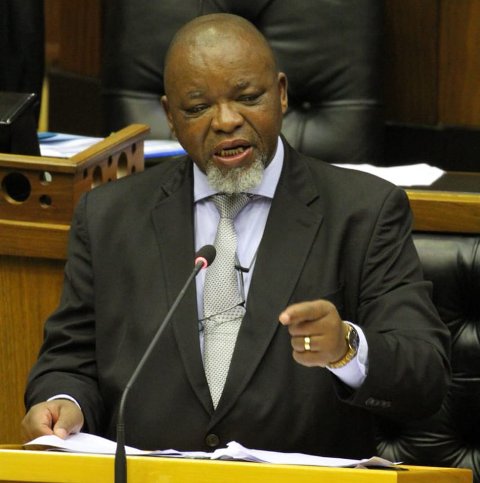SA’s Mining Industry Declared a Sunrise Sector Amid Global Headwinds
The study produced 21 individual commodity reports, identifying minerals such as platinum, manganese, iron ore, coal, and chrome ore as key drivers of future economic opportunity.

- Country:
- South Africa
Despite a turbulent global economic landscape, South Africa's mining industry is showing signs of revival and long-term promise, with new strategies, funding initiatives, and exploration programs set to bolster its contribution to the national economy. This optimistic outlook was shared by Minister of Mineral and Petroleum Resources, Gwede Mantashe, during the 2025 Budget Vote address delivered in Parliament.
Mantashe highlighted a new era for the sector—once labeled a "sunset industry"—as it shifts toward renewed growth, increased investor appeal, and a critical role in South Africa’s energy transition and economic development.
Strategy Driven by Critical Minerals and Market Insight
Central to this optimism is the work done by Mintek, South Africa’s national mineral research organization, which recently concluded an in-depth study on the state of mining and a Critical Minerals and Metals Strategy. The findings reinforce the country’s mineral wealth as a future growth pillar.
The study produced 21 individual commodity reports, identifying minerals such as platinum, manganese, iron ore, coal, and chrome ore as key drivers of future economic opportunity.
“In contrast to the sceptic view that the South African mining industry is a sunset industry... we are now more convinced than ever that the South African mining industry is a sunrise industry,” said Mantashe.
He described the mining frontier as one filled with "exciting opportunities for investors and the economy," despite current geopolitical and economic turbulence.
Resilient Economic Contribution Amid Global Challenges
Mantashe acknowledged that the sector continues to navigate significant global challenges, including trade tensions, geopolitical instability, and the impact of tariffs—particularly from the United States on mineral exports.
Nevertheless, the industry bounced back in 2024, with mining gross value-added rebounding by 0.3% following a 0.5% contraction in 2023. The sector contributed R451 billion to the country’s Gross Domestic Product (GDP)—maintaining a stable 6% share of GDP.
In export terms, the mining sector generated R674 billion in earnings, comprising:
-
R586.4 billion from primary minerals
-
R87.5 billion from processed minerals
This represents a modest 0.6% decline from R678 billion recorded in 2023, signaling resilience amid softening global demand and price fluctuations.
Junior Exploration Fund Fuels Future Discovery
Mantashe emphasized that future sustainability lies in exploration, particularly in discovering new mineral deposits that can serve evolving global demand. To this end, the Junior Mining Exploration Fund, launched through a R200 million allocation from National Treasury and matched by the Industrial Development Corporation (IDC), is a game-changing development.
“This fund is poised to unlock new mineral discoveries and drive transformation,” he said.
The first call for applications has already seen legal contracts signed with black-owned junior mining companies, aiming to expand South Africa’s exploration footprint and create new opportunities in historically marginalized sectors.
Mantashe noted that this is particularly important as legacy commodities like gold naturally decline, and emerging sectors such as advanced manufacturing, green energy, and infrastructure development demand new mineral inputs.
Geological Mapping and Data to Guide Investment
The Council for Geoscience (CGS) is also advancing efforts to stimulate exploration through its Integrated and Multi-Disciplinary Mapping Programme. This initiative aims to improve the availability of pre-competitive geological data, enabling informed investment decisions.
The CGS mapping program includes both onshore and offshore territories, and will continue throughout the 2025/26 fiscal year, enhancing the accuracy of mineral potential assessments and guiding exploration investments.
Departmental Budget and Key Investments
The Department of Mineral and Petroleum Resources has been allocated a total of R2.86 billion for the 2025/26 financial year. Of this, R1.16 billion will be directed to public entities, municipalities, and implementation partners. Key project allocations include:
-
R134.7 million for the rehabilitation of derelict and ownerless mines, implemented by Mintek
-
R22.4 million for the Mine Rehabilitation Research Project, implemented by CGS
-
R32.3 million allocated to Mine Water Ingress Project, led by CGS
-
R46.1 million to the Petroleum Agency South Africa (PASA) for the Shale Gas Project
These investments form part of the department’s commitment to environmental sustainability, water resource management, and energy diversification.
A Vision for a Transformed, Inclusive Sector
Minister Mantashe concluded his address with a strong affirmation of the government's intent to build a transformed and inclusive mining industry, anchored in exploration, innovation, and equitable development.
“Expanding this fund is not just an investment in new mining frontiers but a commitment to ensuring that our mineral wealth contributes to a more inclusive and transformed industry.”
As global interest in critical minerals grows, particularly those essential to renewable energy technologies, batteries, and electronics, South Africa’s position as a mineral-rich nation is once again at the forefront of economic opportunity.










